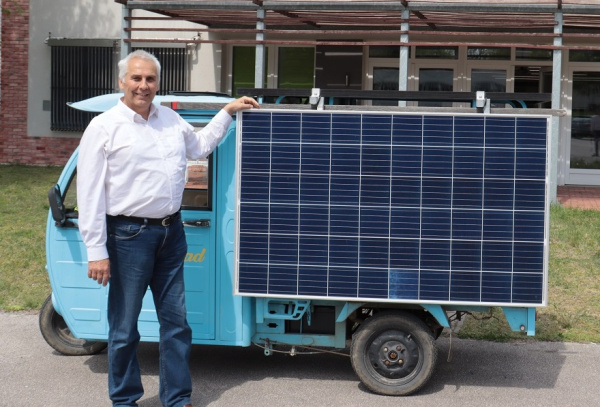
In the EU 1.5° Lifestyles project, we are working and interacting with different stakeholders to learn more about 1.5° lifestyles as well as the factors that enable and obstruct efforts to these ways of living. As part of this learning process, we are interviewing citizens who are pioneers of 1.5° lifestyles in different European countries. We will share their inspiring stories in our blog. First, we share the story of a Hungarian family.
A growing number of people are trying to lead green lifestyles, but not all of them can see the bigger issues when it comes to sustainable living. It is, of course, always a good thing to use less packaging, to collect waste selectively or use eco products, but if we have to drive to get our eco detergent from the hypermarket, we are not further ahead in terms of reducing our ecological and carbon footprints. What does a sustainable and eco-friendly lifestyle really look like? We will find out from the Dőrys in Hungary.
Dr. István Dőry, a physicist, and his wife, a teacher, Magdolna Kéry, moved from the Hungarian capital to a small village called Egyházasfalu close to the country’s Western border, and have been living in a renovated, basically autonomous cob house for the last 17 years. According to them the house could function as a space station (or an earthship, if we want to stay on ground), as it is a viable, self-sustaining system even without an external energy source.
They both have had a really strong drive to lead a sustainable life for as long as they can remember: a life that preferably takes less from the ecosystems than it gives back, one that is causing less damage than the ecosystems are capable of repairing.
Want to be sustainable? Keep away from these four things
In Dr. Dőry’s view there are four main principles (i.e. structures, institutions, etc.) that make current urban lifestyles unsustainable:
- Relying on fossil fuels: They are depleted faster than they are replenished. Oil is running out five million times faster than its natural “production” time.
- Relying on infrastructures (pipelines, the sewage system, electricity, roads, petrol stations, etc.): These are the structures that make us consume fossil fuels in the first place.
- The third is our dependence on banks: with their crediting activities banks are fuelling irrational demand and overuse of the planet’s resources. Their money creation mechanisms maintain and worsen the (unsustainable) state of the whole world.
- The fourth is population density: salaries are higher and infrastructure is better in cities, so that is where people want to live. However cities have a lot of disadvantages - they are 6 degrees warmer on average than villages, to name one...
With the above mentioned principles on their minds the Dőrys made a prudent and conscious choice to relocate to a place where they could make their dream of a sustainable life finally come true. They looked for a place in the countryside where:
- there are no main roads, so there is no air pollution from traffic, but you can maintain your mobility with public transportation, bikes or even a sun-powered vehicle, the “solar snail”;
- you can heat the house with good quality dry wood from your own energy forest that sequesters more CO2 (in the summer), than the emission the wood-burning stove is responsible for (in the winter);
- you can use solar panels and cooperate with the electricity supplier to take your surplus;
- there is a garden for growing food, keeping animals, and also space for treating sewage water (using a root zone wastewater treatment);
- you can use a composting toilet, which also frees you from the infrastructure and provides humanure for the garden;
- you have your own well for water;
- you are part of a community, where problems are solved easier and sustainability is also simpler than if you had to deal with everything alone (e.g. renovating your roof, finding local solutions to problems).
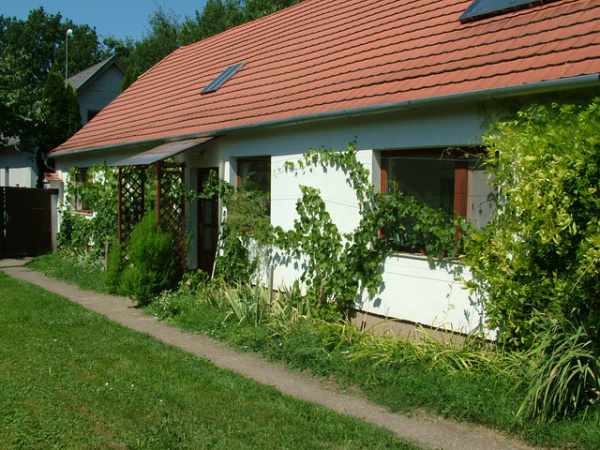
After finding the right location and house, it took the Dőrys 6 years to implement all their ideas – including insulating their home - and they spent whatever money they could spare from their monthly income as a teacher and a lecturer on all the needed renovations.
The electricity in their house comes from four, consciously used solar panels that run all their household appliances, and also help to circulate the heat from the wood-burning stove in the winter. The family’s electricity bill is 7% of the average Hungarian household’s (they are roughly using a twentieth of the fossil energy consumption of average Hungarians!), and they very rarely depend on the energy grid. Hot water is provided by the solar collector in the summer, and the stove in the winter.
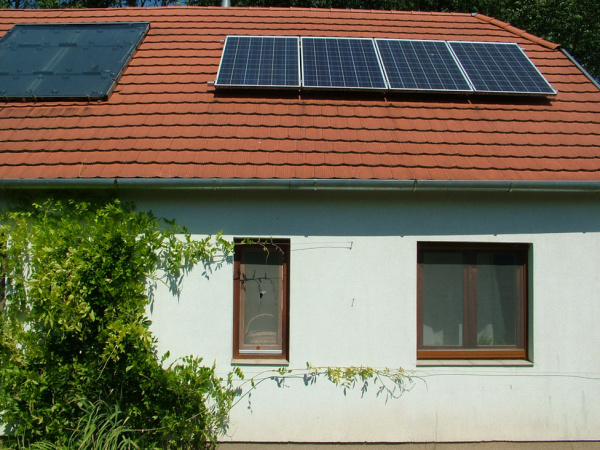
According to Dr. Dőry we can only eliminate fossil fuel from our lives and successfully reduce our energy consumption, if we…
- most important of all, adopt a sufficiency mindset;
- insulate our houses;
- switch to (effective) biomass heating and plant the right amount of biomass (energy forest) – in his view and calculations, this is 90% of the solution to go fossil fuel free;
- and install solar panels, which gives the remaining 10% of becoming fossil-free.
With an appropriate amount of insulation on every house (14 cm in the Dőrys’ case) and 2,000 trees per person (taking up about 2,000 m2 and doubling the current forest cover in a few years), he calculated that we would actually meet the climate targets.
What we can also do is motivate others – family, friends, neighbours – to change their thinking and act to lead a more sustainable life.
The Dőrys have been committed environmentalists for decades. "We have put our whole lives on this, we want to pass on the green approach to as many people as possible, especially young people." – says Magdolna. And they are definitely not only talking about out it! Among many other activities – like the eco camp for school kids organised by Magdolna in their village - the Dőrys have been active and very successful participants, most of the time community leader energy masters, in the E.ON EnergyNeighbourhoods program for several years.
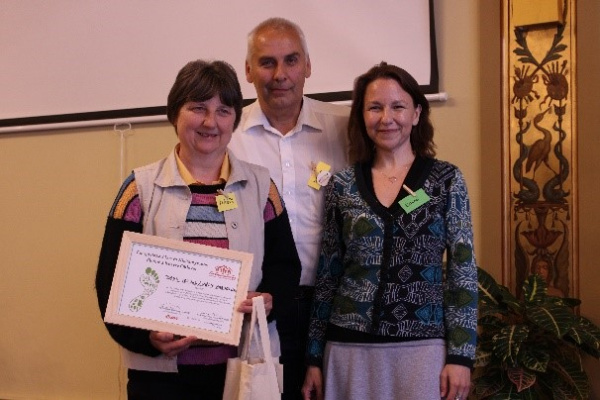
In their annually organised eco camp they try to teach children what we all should learn: that we have to focus on the 5 main impact areas in our lives – water management, agriculture, energy management, waste management, transportation – and become as ‘green’ as possible in these „big impact” areas. Magdolna developed the ideological foundation of this lifestyle, too, she calls it evolutionary environmental morals, which helps to understand why we should share our conditions of existence with all living creatures.
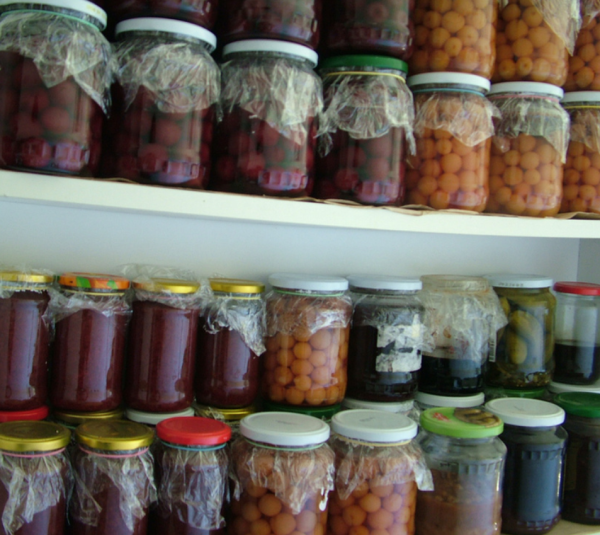
“Climate-friendly living is cheaper in the long run. We use less energy and water, hopefully buy less, don't drive, grow more of our own food, and rediscover energy saving habits.” – says Dőry. “There is no obstacle to living a poorer, simpler, more thoughtful life. […] Yes, it means that we need to adapt to some constraints, but in the world today there are many more – just different – constraints, tied to money, city-living, infrastructure, etc. For this kind of living, you have to be here, be present, breathe with the house. […] Living an environmentally conscious and sustainable life makes perfect sense. What else would make sense?”
Orsolya Antal and Edina Vadovics, GreenDependent Institute
| Price in HUF/EUR (1 EUR = 370 HUF) | Notes | |
|---|---|---|
| House+land | 1.8 million HUF in 2007 (worth 2.9 million in 2022 with a 61% inflation rate), 7500 EUR in 2022 |
In general: the further you buy a house and land from the closest large town, city or typical holiday area, the cheaper it gets in Hungary. The Dőrys’ place is in West Hungary, in a village of about 920 inhabitants. |
| Renovation costs/person | 2 million HUF or 5400 EUR/person |
This is the money they needed to reach sustainability after they bought the house – it was spent on insulation, building a wood-burning stove, solar panels, accumulator, control system, forestation, etc. |
| Solar snail |
893 EUR - price of the vehicle All together around 3035 EUR |
Partly financed from the family’s own money, and partly covered by Edutus University where Dr. Dőry is a lecturer and involved students in building the vehicle. (It is important to keep in mind that the Dőrys do not have a car, so there is a substantial saving as they do not have to pay for it, maintaining it, buying fuel, etc.) |
| Land for the energy forest | 0.4 million HUF (1080 EUR) |
This would have been the price had they not agreed with the municipality to include the land in the settlement plan, and thus could use it for planting trees free of charge. |
| Monthly overhead | Basically ZERO | They have solar panels, a well for water, dry fallen wood from the energy forest for heating and cooking, and a solar snail for transportation. |
| Income | 300,000 HUF / month / 3 people (800 EUR) |
Based on an average net income for teachers/lecturers after 36-38 years of work in Hungary. |
| Daily “pocket money” | Max. 500 HUF (1.3 EUR) |
“The less you spend, the smaller your footprint!” This is what the Dőrys say, and which is actually found by research as well, see e.g. UNEP Emissions Gap Report 2020. |
Sources:
- https://divany.hu/szuloseg/2017/08/14/dory_interju_a_vilag_osszes_problemajat_erintettuk_-_es_megoldottuk/Sources:
- Citizen Interview conducted in the H2020 research project EU 1.5 Degree Lifestyles
Source of pictures: Dr. Dőry István ©, GreenDependent ©, https://divany.hu

